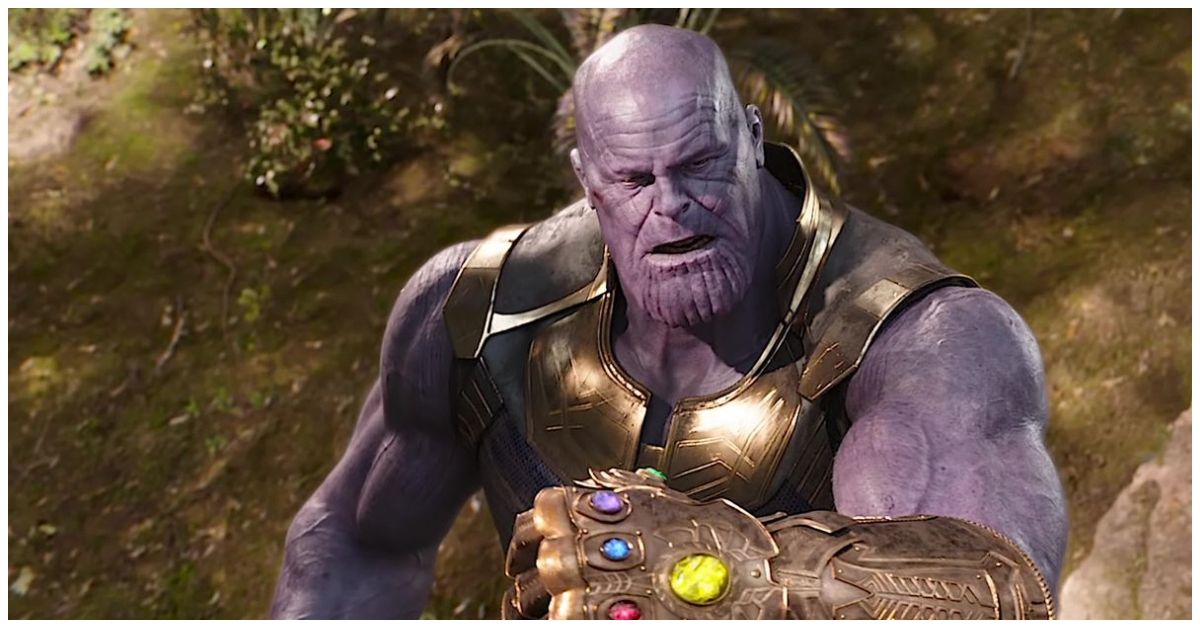Fans have been debating Thanos' plans in The Marvel Cinematic Universe for years. While he is easily the most memorable, formidable, and well-designed villain that The Avengers have ever had to face on-screen, there are still some glaring problems with him. And some of these problems date back to the original creation of the character.
The truth is, the origin of Thanos is somewhat thematically connected to the ethos of the character himself. This is the sign of a truly engaging character. One who has stuck with audiences for decades and has found a home in the halls of cinema history thanks to an excellent performance from Josh Brolin. Here's the true origin of Thanos from the comic books...
Thanos Was Inspired By Dr. Sigmund Freud
Even though Thanos' most famous comic book story arc, 1991's "The Infinity Gauntlet", came out in 1991, writer Jim Starlin actually created the character in the 1970s. While artists George Perez and Ron Lim as well as editor Craig Anderson helped make Thanos the most iconic enemy of The Avengers thanks to "Infinity Gauntlet" and other comic series, Jim was the mastermind behind the baddie. According to a fascinating interview with Inverse, Thanos was actually inspired by Sigmund Freud. Or, rather, Sigmund Freud's concepts.
"Shortly after I got out of the Navy, I was taking advantage of a veteran’s education program. One of the classes I took was a psych class. We had a guest lecturer one day, who came in to talk about Freudian concepts, and he touched upon the notion of the Eros and Thanatos of human nature. Of course, I latched on to the darker part of that, and that’s where Thanos came from," Jim Starlin said to Inverse.
Not only did the name come from Freudian's concept, but Thanos' desire for death, aggression, and compulsion came from it as well. Although, we'd be remised if we didn't mention Thanatos is Greek Mythology, which is literally the personification of death itself.
When Jim created this character (which was around the same time that he created Drax The Destroyer) he really didn't think he was going to be able to bring Thanos to Marvel Comics. But soon after, Jim was asked to work on an Iron Man comic. This is when he revealed the drawings he had done for the character, and it was nothing like the Thanos we know and love to hate. This is usually the point that Jim brings up whenever he is accused of stealing the look from the uber-villain Darkseid from DC.
"I had some drawings of a character that looked very much like Metron from The New Gods," Jim explained. "And when I got to New York and was working for Marvel, I talked [editor-in-chief] Roy Thomas into letting me use Thanos in one of the Iron Man stories I was doing. Thomas said to 'beef him up', and, as a result, everyone thought that I ripped off Darkseid for Thanos. The truth is, I ripped off Metron!"
As time went on, Thanos became even thicker and, as a result, nobody could ever let it go that Thanos ended up looking like Darkseid as well as the similarity of their function in their respected universes. Although, it's arguable that Marvel has used Thanos in some pretty incredible ways, both in the movies and in the comics...
"I was doing The Silver Surfer with Steve Englehart before Jim came on, and when I heard Jim was coming back I was blown away. I grew up reading Jim’s stuff and he was one of my favorite artists when I was a kid. When I heard what he wanted to do with Thanos, I was just blown away," Ron Lim, an artist at Marvel, explained. Ron ended up being one of the most influential artists to work on the character as he had his hand in "The Infinity Gauntlet, "Thanos Quest", and "The Silver Surfer". All of which primarily take place in the larger galaxy of the Marvel universe.
Why Jim Loved Writing For Thanos
"I gained a reputation as being a 'cosmic' storyteller at Marvel, but part of that was just self-defense. I hate drawing horses and cars, so doing stories in space was the best thing for me. As a writer, I learned a lot from watching old Star Trek episodes. I remember an interview with Gene Roddenberry where he was talking about a story where these aliens were black on one side and white on the other. He was able to do this story about bigotry without preaching to the audience. I thought, when it came to cosmic stories, this was a way for me to tell the stories I want with the messages I want — without seeming like I’m at a pulpit," Jim explained to Inverse. "This is why I love telling stories with Thanos. He’s a character based upon Freudian and Jungian psychology. Like, the fact that he’s in love with Death is a pretty glaring psychological concept, as is the sibling rivalry with his brother, Eros. Thanos also has an Oedipus complex and he’s a whole bundle of neuroses and different psychological aspects that you can run on all day with. That’s what makes Thanos so interesting."
Of course, Thanos' love of the personification of Death didn't end up making it into the first four phases of the Marvel Cinematic Universe. But, for the most part, the filmmakers behind the MCU focused on other comic-accurate aspects of the character. The things that Jim created all those years ago that have resonated with fans ever since.

